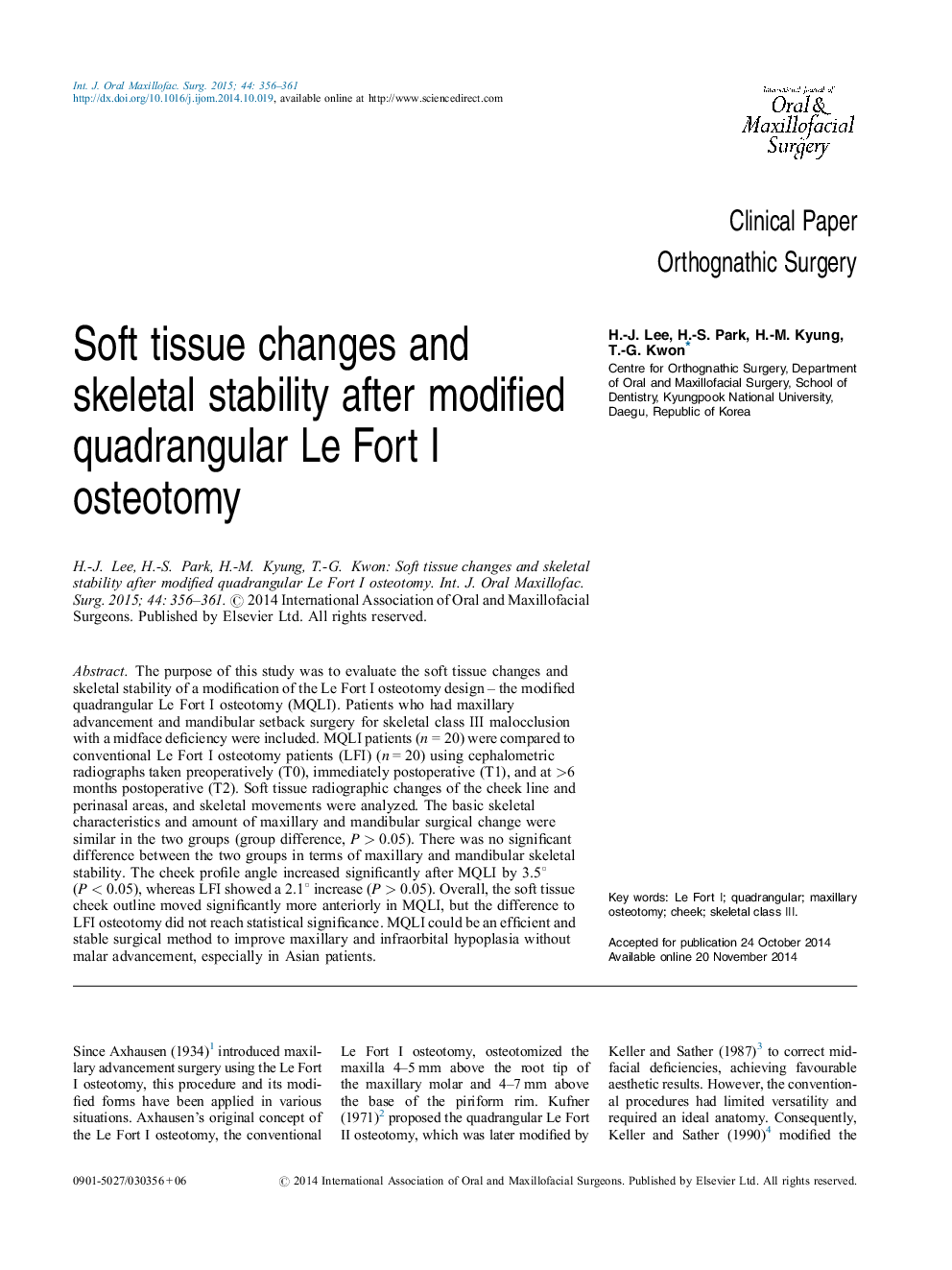| Article ID | Journal | Published Year | Pages | File Type |
|---|---|---|---|---|
| 3132196 | International Journal of Oral and Maxillofacial Surgery | 2015 | 6 Pages |
The purpose of this study was to evaluate the soft tissue changes and skeletal stability of a modification of the Le Fort I osteotomy design – the modified quadrangular Le Fort I osteotomy (MQLI). Patients who had maxillary advancement and mandibular setback surgery for skeletal class III malocclusion with a midface deficiency were included. MQLI patients (n = 20) were compared to conventional Le Fort I osteotomy patients (LFI) (n = 20) using cephalometric radiographs taken preoperatively (T0), immediately postoperative (T1), and at >6 months postoperative (T2). Soft tissue radiographic changes of the cheek line and perinasal areas, and skeletal movements were analyzed. The basic skeletal characteristics and amount of maxillary and mandibular surgical change were similar in the two groups (group difference, P > 0.05). There was no significant difference between the two groups in terms of maxillary and mandibular skeletal stability. The cheek profile angle increased significantly after MQLI by 3.5° (P < 0.05), whereas LFI showed a 2.1° increase (P > 0.05). Overall, the soft tissue cheek outline moved significantly more anteriorly in MQLI, but the difference to LFI osteotomy did not reach statistical significance. MQLI could be an efficient and stable surgical method to improve maxillary and infraorbital hypoplasia without malar advancement, especially in Asian patients.
